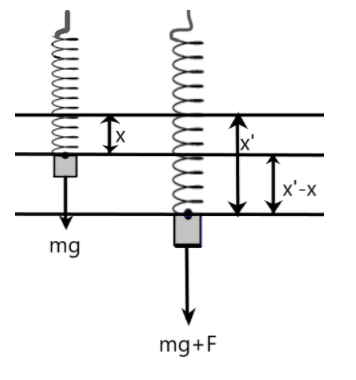Question
Question: A body of mass ‘m’ is suspended to an ideal spring of spring constant ‘k’. The expected change in po...
A body of mass ‘m’ is suspended to an ideal spring of spring constant ‘k’. The expected change in position of a body due to an additional force ‘F’ acting vertically downwards is –
& \text{A) }\dfrac{3F}{2k} \\\ & \text{B) }\dfrac{2F}{k} \\\ & \text{C) }\dfrac{5F}{2k} \\\ & \text{D) }\dfrac{4F}{k} \\\ \end{aligned}$$Solution
We are given a spring and mass system with the physical quantities related to them. We can easily find the displacement of the spring from the mean position due to mass and the given additional force using the energy stored in the spring system.
Complete answer:
We are given an ideal spring which has an initial mass hung on it as we can see in the below figure. According to Hooke's law, the force acting on the spring due to the mass is proportional to the displacement made by the spring from its mean position.

The work done by the mass on the spring against gravity is stored as the energy in the spring. We can equate these energies as –
